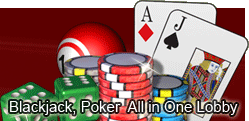
GNU Backgammon and Match Equity Tables
A backgammon match consists of a number of backgammon games with the winner being the player who wins the majority of the backgammon games. Match equity tables show the probability that a backgammon player will win a match given the number of backgammon games he and his opponent have yet to win. Match equity tables are drawn up by analyzing the outcomes of thousands of backgammon matches. Different tables are drawn up using different assumptions. The GNU Backgammon program has 15 match equity tables in its database. Match equity tables are used for determining best options in match situations, such as whether to double or not. In GNU Backgammon the user can specify which of the tables he wants the program to use.
One of the earliest match equity tables is the Woolsey-Heinrich table, prepared 14 years ago. At that time it was believed that the gammon rate was 20%. Current computer simulations show that the gammon rate in backgammon games is 26%. Therefore when the Woolsey-Heinrich table is used with GNU Backgammon the results are not very accurate.
One of the later match equity tables created in 1999 is the Snowie Version 2.1 table. It was generated by the backgammon computer application Snowie and uses the gammon rate of 26%. This table gives much better results.
Experts claim that the best of the match equity tables to use with the GNU Backgammon program is the Zorba table. It was generated in 2003 using rollouts from the GNU software itself. Its superiority lies in the fact that it has replicated match conditions better than other tables. Backgammon players are advised to use this table for their backgammon games.
|
|

